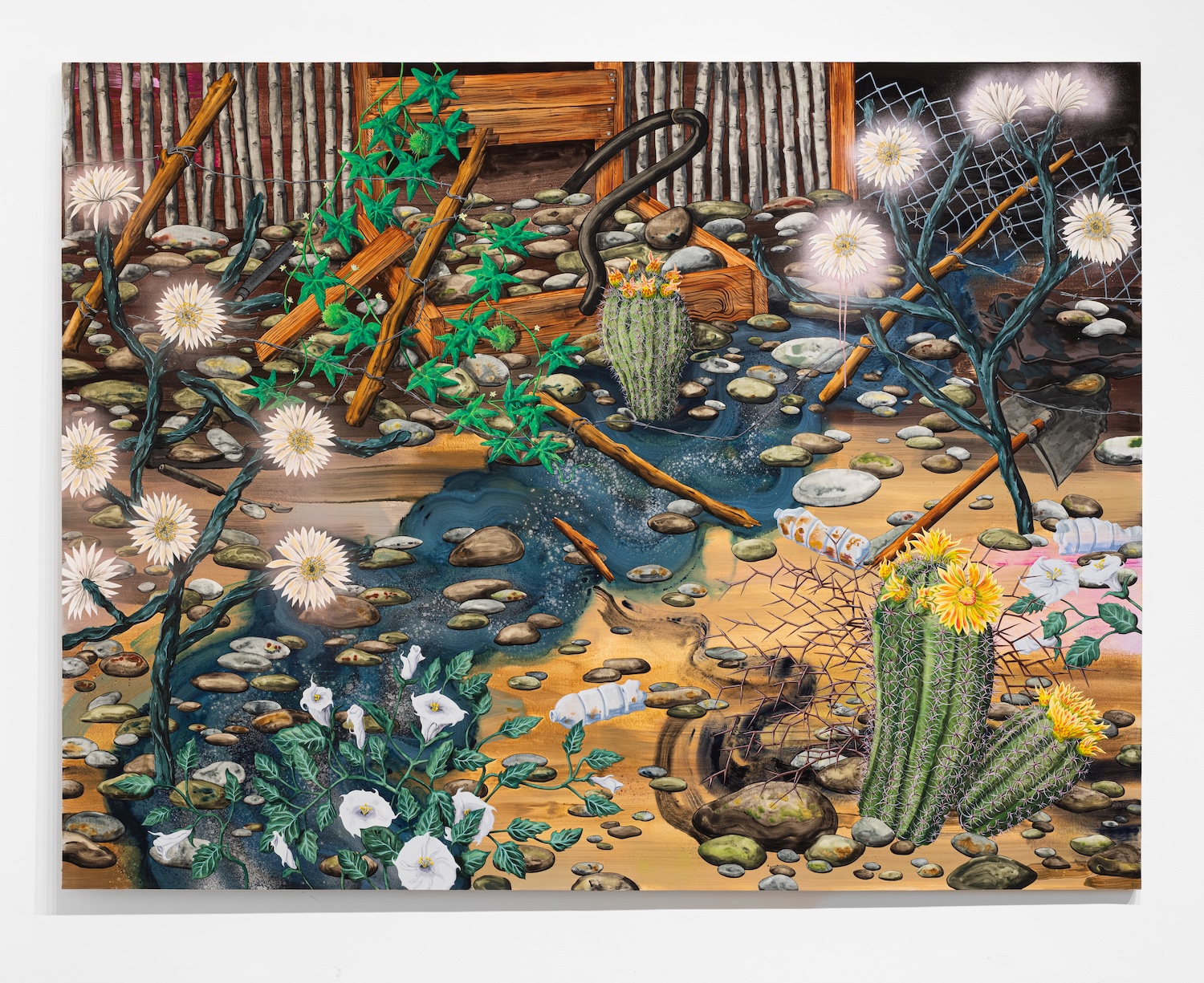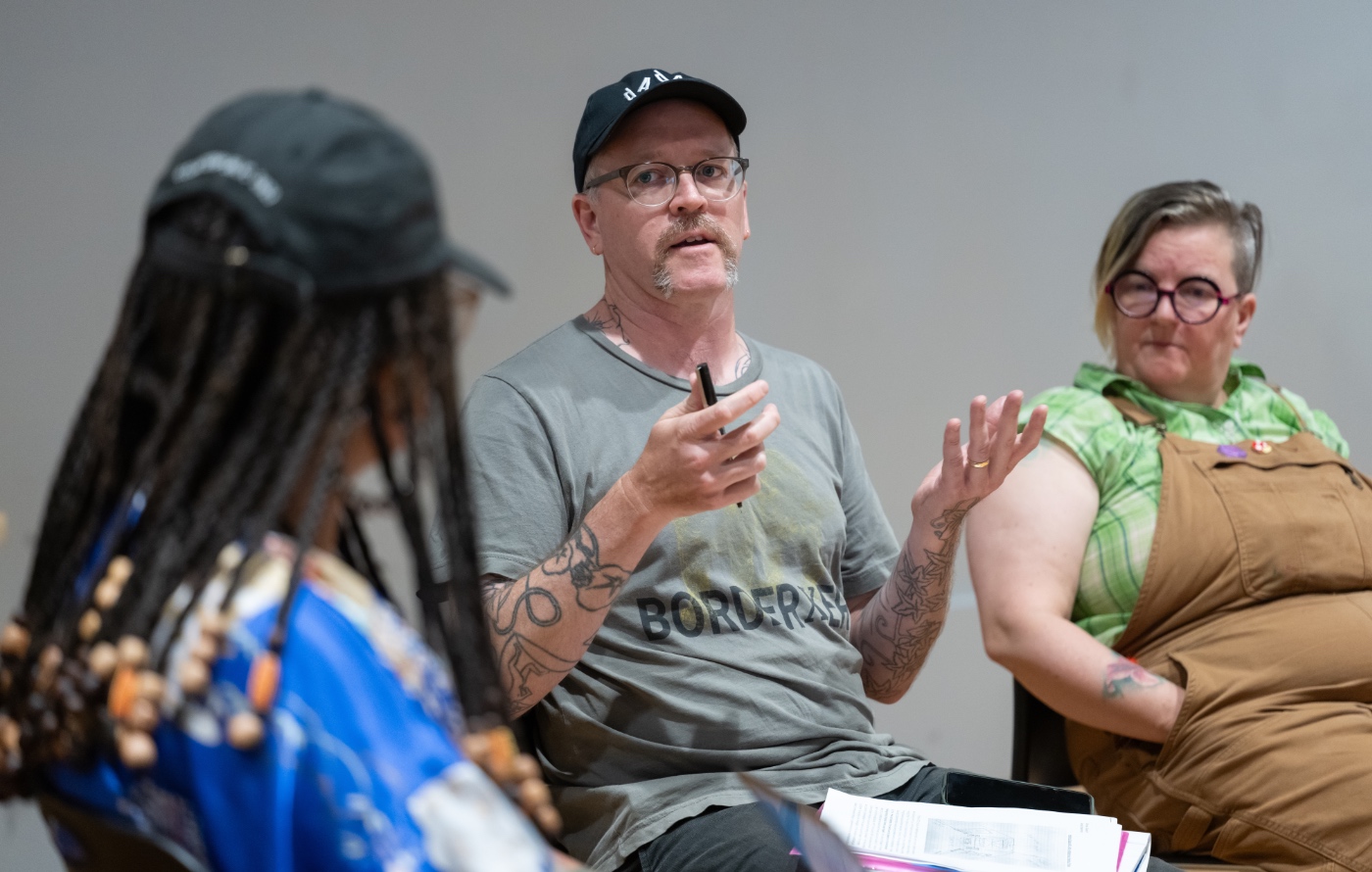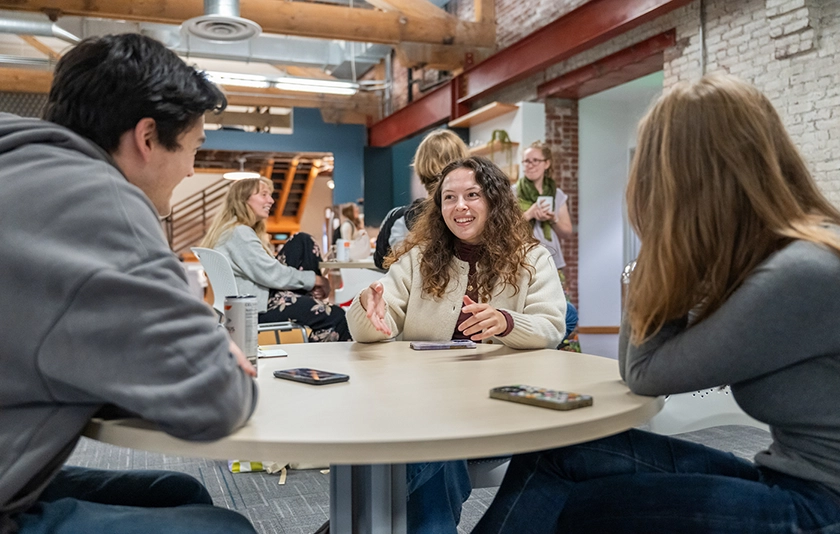How do you capture the enormity of climate change and the complex emotions associated with it? This challenge lies at the heart of Ryan Pierce's work as an artist, educator, and writer. As Assistant Professor and Chair of the Low Residency MFA in Visual Studies at Pacific Northwest College of Art, Pierce employs a multimodal creative approach to craft narratives about ecology and the resilience of the natural world. Through his work, he encourages students to develop their own unique creative perspectives on these critical issues.
Students in PNCA’s low residency MFA program enjoy the flexibility of a three-year hybrid program, which has them creating art remotely and attending intensive summer residencies in person on campus in Portland. These busy working artists benefit from personalized mentorship from faculty like Pierce, who takes a hands-on approach to guiding students to develop their own creative practice.
“I want my students to discover their voices. I want them to adopt a healthy critical lens and form a research practice that can be mutually sustainable with their creative practice,” Pierce says. “Grad school is a time of building and exploring habits and then applying those practices.”

Pierce’s large-scale paintings capture the convergence of humans and the natural world by imagining the world’s recovery from human industry. In works such as “Queens of the Night” (2022), luminous datura and cactus flowers are foregrounded by plastic water bottles and old chain-link fences, portraying a familiar and realistic natural scene amid pollution and environmental destruction.
“One of the ways that I was socialized was to understand a binary between people and nature. I’ve spent much of my life trying to debunk and unlearn that socialization to embrace our problematic species as part of the ecosystems where we live,” he says.
This awareness began during his upbringing in the Redwoods of Mendocino County in Northern California. “I feel nourished by proximity to the natural world. I really enjoy observing nature and forming relationships with the place where I live. That is society to me,” Pierce says.
His attention to narrative comes from his work as a reader and writer. “I work in a hybrid space between walking, writing, and image making. I get starting points from all over, from literature, from folk art, from ecological theory and philosophy.” He also works extensively in printmaking.
With notable accomplishments, including international exhibitions, prestigious residencies, fellowships, grants, and more, Pierce guides his students with invaluable lessons about their professional creative lives. “I work with my students to help them envision the artist life that they want, and what’s exciting to me is that there’s not just one path,” he says. “Now that I’ve been an educator for 15 years, it’s really rewarding to see students achieve those things.”
Before coming to PNCA, Pierce co-founded Signal Fire, which facilitated nomadic wilderness residencies on public lands and invited college students — including some from PNCA — to spend a month in the backcountry in an accredited arts and ecology field program.
As he continues his artwork and teaching, Pierce looks forward to continuing to develop the Visiting Artist Lecture Series and will be working on a large-scale public art piece for the Portland International Airport in early 2026.
Ultimately, he hopes that his evocative work challenges viewers to reconsider their own relationship to climate change and their engagement with the natural world.
“It’s easy to feel pretty hopeless about climate change, but hopelessness about the planet’s future feels like a bit of a cop-out,” Pierce says. “I aim to capture the complexity of these issues through a speculative space in my artwork, portraying a messy evolution.”



